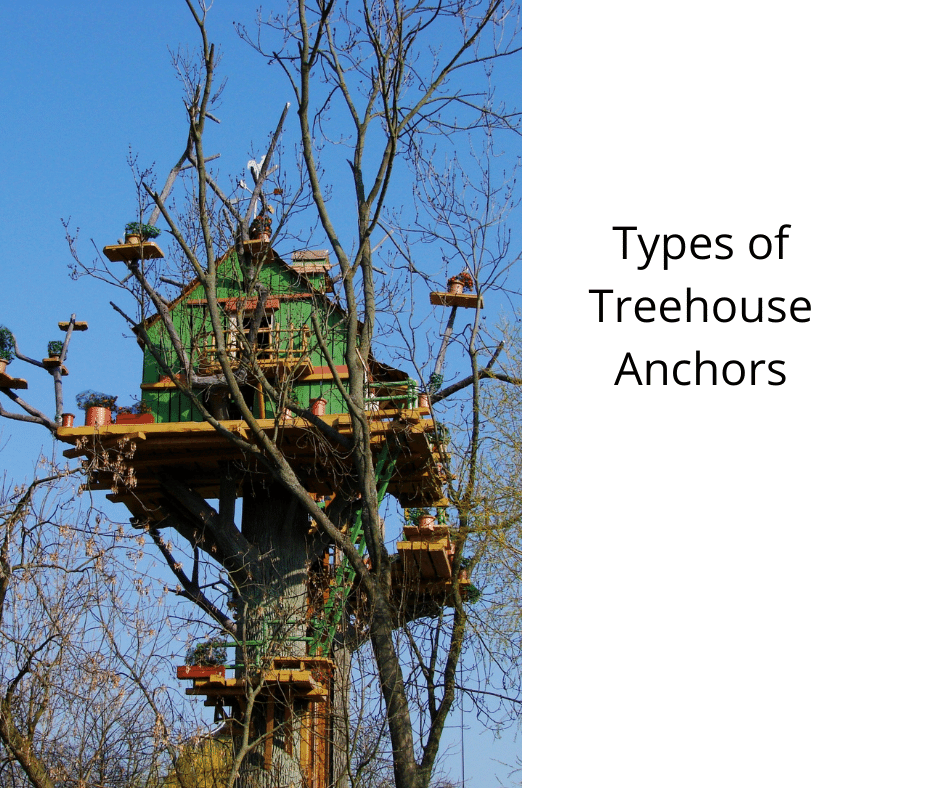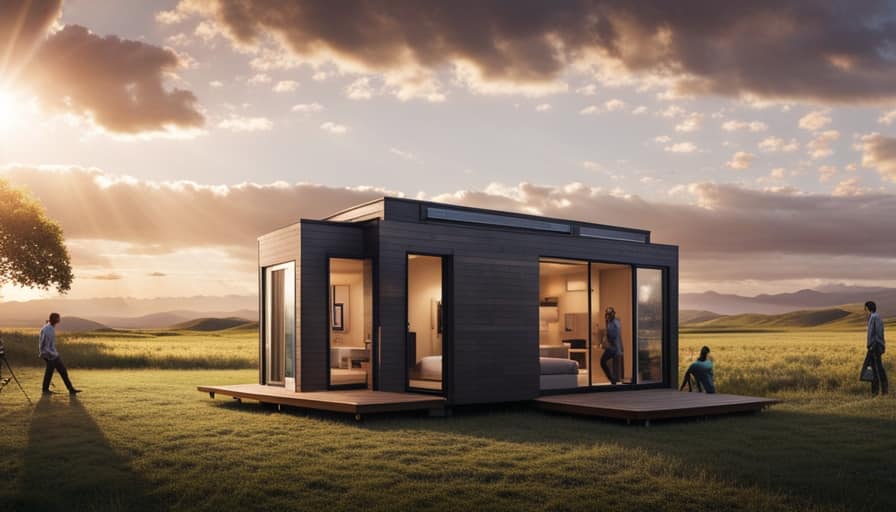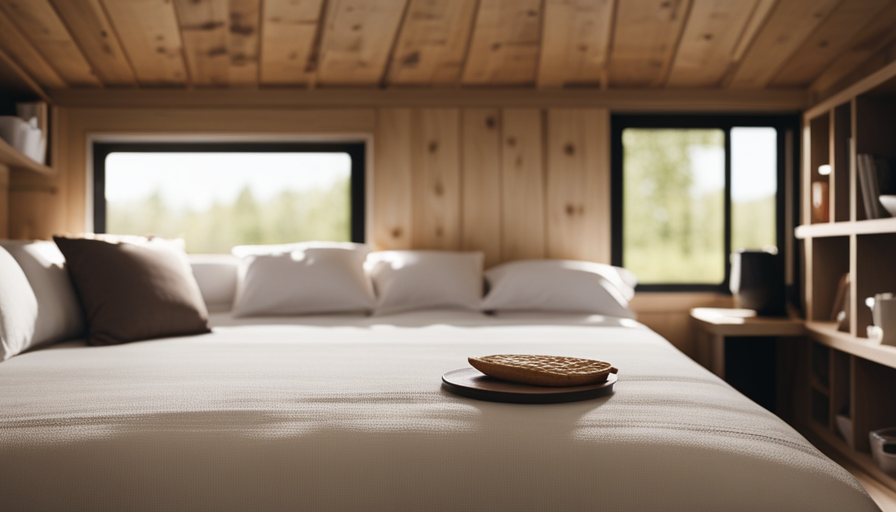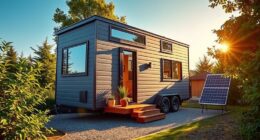Treehouse bolts are specialized hardware made for constructing treehouses. There are different types of these bolts, including Treehouse Attachment Bolts (TABs), Pipe Suspension Brackets, J-Brackets, and Floating Brackets. These pieces of hardware are essential for securing the treehouse to the tree’s trunk. They can be easily purchased at home improvement stores. It is crucial to select treehouse bolts that are the correct size and style for your particular project.
TABs
The main advantage of TABs is that they allow you to attach a treehouse to a tree without damaging it. Typical TABs are composed of a large boss or a giant bushing affixed to the end of the bolt. Additional steel bars are sometimes used to extend beyond the bushing. Depending on the type of tree you’re using, you may need to extend the bar a few inches beyond the point you plan to push onto the tree.
When attaching a treehouse to a tree, TABs are the best option. They require only one hole and are easier to install than lag bolts. They are especially useful when attaching bridges and larger treehouses. They also come with special screw mountings designed to work with TABs. Although TABs are the most popular choice for attaching a treehouse to a tree, it is important to note that each TAB requires a specific bracket.
While traditional bolts work well for attaching a treehouse, TABs are the most effective option for attaching a treehouse to a tree. Their large flange and core make them capable of supporting heavy loads, up to 2000 pounds. They can also be used in cantilever methods, which enable the tree to grow outwards. In addition to TABs, you can also use cable eyes, knee brace brackets, and floating brackets to secure your treehouse to your tree.
When establishing a TAB, be sure to check its diameter and length. A one-inch TAB needs an inch-deep hole, while a three-inch TAB requires a three-inch-deep hole. Moreover, a TAB should be installed at a distance that enables the tree to expand its girth. Moreover, TABs have a spring steel construction, which makes them resistant to wind and other forces.
Pipe Suspension Brackets
If you’re building a treehouse, you may need to secure the beams with Treehouse suspension brackets. There are several different types of brackets available, including pipe and lag bolts. Each of these has a different function, but all are useful for different situations. A pipe bracket is ideal for attaching a treehouse to a tree with multiple branches, since it doesn’t rely on the strength of the main tree to support the treehouse. Pipe brackets work with a TAB or lag bolt that measures 1.25 inches. They’re also perfect for connecting multiple tree houses together.
The best treehouse suspension brackets are made of 1/4″ steel, welded together, and only have one bolt, which prevents compartment problems. The holes in the brackets must be positioned so that the beam can be inserted into them. A simple design will reduce fabrication costs. The bottom portion of the brackets should be fitted with a metal plate to prevent wear and damage to the beam. Lastly, it’s important to consider the size and weight of the beams when choosing a bracket.
The bottom portion of the platform should have a joist hanger to support the beams. It should also be wide enough to prevent the platform from bending or twisting. The brackets should be secured to the underside of the beams and be installed using TAB nuts. If the floor height of the treehouse is too low, you may need to use temporary posts to support the beams. Alternatively, you may choose to use concrete pier footings to support the beams.
Once the brackets have been fitted, you can now attach wooden flooring boards to the platforms. These should be attached to the TABs by screws and should be secured with screws. These will serve as an angle brace. Additionally, they can be used for the platform flooring. And remember to keep the decking boards level. And remember, make sure to leave space for exits and entry points. And do not forget to place a pair of screws on top of the brackets.
J-Brackets
There are two main types of J-brackets for treehouses. The first is the simple one that is used when a beam needs to span a distance between two points. This type of bracket needs a beam fed into it from one end and the other end through a metal strip. The beam is then fixed into the bracket using a spirit level. You should also make sure the bolt hole is slightly smaller than the diameter of the beam.
The second type is the floating bracket. This type of bracket is meant to allow a treehouse to move with the wind, which allows for greater flexibility. The smallest treehouses should use static brackets, while major ones need floating brackets. It is important to note that the floating brackets are only suitable for use with four or more trees. For more information, check out the J-brackets for treehouse anchors.
When attaching a treehouse to a tree, you must ensure that the trunk of the tree is at least 12 inches in diameter. This way, you can attach the treehouse without damaging the tree. Then, drill a single hole. Remember not to drill too many holes in the tree, as this can harm the tree. To attach a treehouse to a smaller tree, you should have a large tree with a diameter of at least 12 inches.
Another way to secure a treehouse is to use floating brackets. These brackets are specially designed to allow the treehouse to move without breaking. This is because they are designed to allow for some movement. This allows for more flexibility in the positioning of the treehouse. When using these brackets, use a spirit level to ensure your platform is level. By ensuring the treehouse is level before installing it, you can avoid many problems with a non-level platform.
Floating Brackets
Floating brackets for treehouse anchoring are ideal for connecting multiple trees to your treehouse. They are 1.25″ in diameter and eliminate the friction between the bracket and bolt. However, you need to know that these brackets will only work with TABs with dimensions of 1×9, 3×9, and 6×12 inches. You may also want to consider using lag bolts with a length of 1.25″ to prevent them from catching on anything.
Floating brackets for treehouse anchoring are a simple structure that slides over the TAB. This allows the treehouse to move up and down with the wind. They are made of steel and have a powder coat finish. Typically, a 1.25″ pipe bracket uses one lag bolt or TAB that measures 12″ in diameter. Floating brackets are attached to the TAB by lag screws.
The first two brackets can be static or floating. The third bracket must be floating. Floating brackets are a perfect option for attaching your treehouse to a tree. They will allow the treehouse to move up and down while keeping it secured. They are specifically designed to prevent the fixings from breaking, and will help keep your treehouse secure. A couple of things to keep in mind when selecting a TAB for your treehouse are the diameter of the treehouse’s trunk and the type of bolts you’ll use.
Treehouse attachment bolts are specialized bolts designed for treehouse construction. They will help distribute the weight evenly and prevent it from breaking the tree. Many of them are capable of holding up to 2000 pounds and more. They are usually made from two pieces of steel and have four sections. A treehouse attaches to them with ease and without any damage to the tree. They are also flexible and will not sag or break in the process.
Cables
When it comes to the safety of your treehouse, one of the most important aspects is that the cables are secure. Treehouses can be dangerous, so it is very important to ensure that the cables will not get into contact with the tree or its branches. If cables are wrapped around the tree’s trunk and branches, they can girdle the tree and cut off the flow of sap. You should also leave at least two inches between the platform and the tree. One of the most common mistakes when building a DIY treehouse is that the platform does not give the tree sufficient room to grow.
To make sure that your cables are secure, consider using lag or TAB bolts that are 1.25 inches long. These are best for cabling from higher points in the tree. These are made from steel and have a powder-coated finish. When choosing treehouse anchor cables, consider the overall design of the treehouse. If the beam is long and radiating, consider laying the cables diagonally along the inside of the wall. Alternatively, if the beam is short, vertical cables can be routed diagonally across the roof space.
Once the platform is complete, the next step is securing the treehouse. This poses special challenges. Not only do the tree grow taller and wider, but it also sways and bends in the wind, making the joints that hold the joists and beams in place a moving target. You can use flexible connectors to hold your beams and joists firmly to the tree and still allow them to move.
Hi, I’m Emma. I’m the Editor in Chief of Tiny House 43, a blog all about tiny houses. While tree houses are often associated with childhood, they can be the perfect adult retreat. They offer a cozy space to relax and unwind, surrounded by nature. And since they’re typically built on stilts or raised platforms, they offer stunning views that traditional homes simply can’t match. If you’re looking for a unique and romantic getaway, a tree house tiny house might just be the perfect option.










